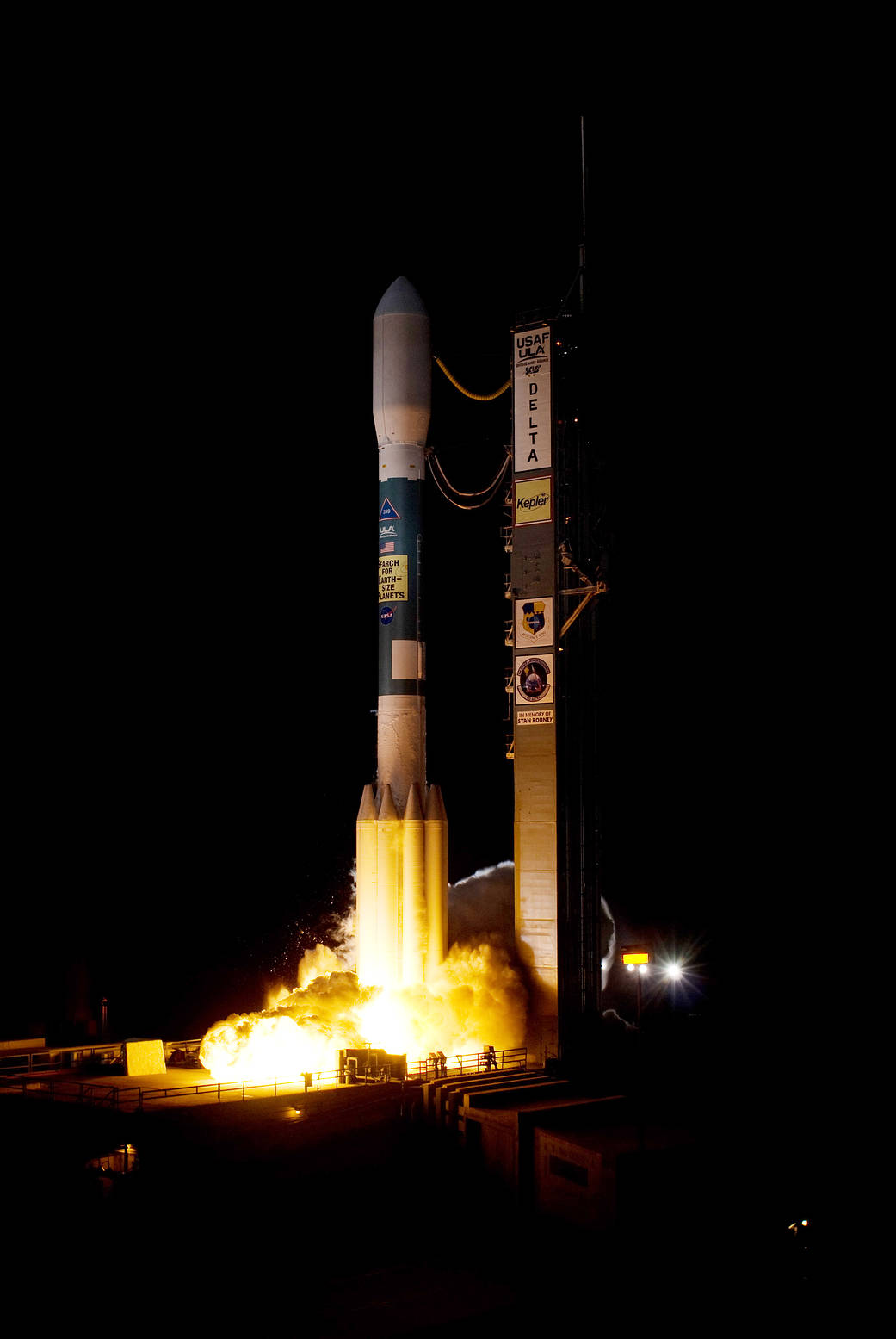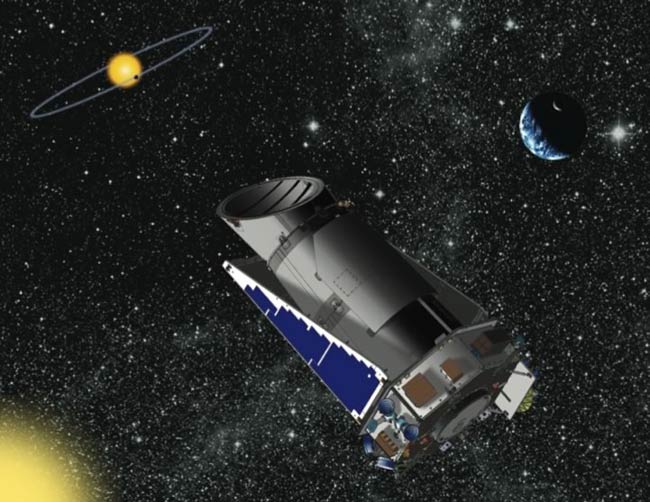The most prolific planet hunter in history took to the skies 10 years ago today.
NASA's recently deceased Kepler space telescope launched atop a Delta II rocket from Florida's Cape Canaveral Air Force Station on March 6, 2009, kicking off a mission designed to determine how common Earth-like planets are around the Milky Way galaxy.
Kepler did not disappoint. The spacecraft's observations suggest that 20 to 25 percent of all sunlike stars harbor a planet roughly the size of Earth in their "habitable zone" — the just-right range of distances where liquid water might be able to exist on a world's surface. And the percentage is probably comparable for red dwarfs, the small, dim stars that dominate the galaxy.
Related: Kepler's 7 Greatest Exoplanet Discoveries

Then there are the raw numbers, which are mind-boggling. Kepler is responsible for nearly 70 percent of the roughly 3,900 exoplanet discoveries to date, and, even though the telescope ran out of fuel last fall, its tally will continue to increase. Almost 3,000 Kepler "candidates" await confirmation by follow-up observations or analyses, and history tells us that most of these potential planets will end up being the real deal.
Kepler hunted for planets using the "transit method," noting the tiny brightness dips caused when a planet crossed its star's face from the spacecraft's perspective.

During its original mission, Kepler stared at about 150,000 stars simultaneously. This work continued through May 2013, when the second of the spacecraft's four orientation-maintaining reaction wheels failed.
Get the Space.com Newsletter
Breaking space news, the latest updates on rocket launches, skywatching events and more!
But that wasn't the end for Kepler. Mission team members figured out how to stabilize the spacecraft using sunlight pressure, and Kepler soon embarked on a second mission called K2.
During K2, the telescope studied a variety of cosmic objects and phenomena over the course of shifting 80-day "campaigns." Exoplanet hunting was part of the program; the K2 haul stands at 359 alien worlds and counting.
So, take some time today to appreciate Kepler's work; it has reshaped scientists' understanding of planetary systems and given astrobiologists reason for optimism in the alien-life hunt, among other accomplishments.
And in case you were wondering: No, Kepler cannot be brought back from the dead. As noted above, the spacecraft orbits the sun, not Earth, and is therefore beyond the reach of a servicing mission.
- Flashback: The Launch of NASA's Kepler Space Telescope
- 7 Ways to Discover Alien Planets
- Latest News About Alien Planets
Mike Wall's book about the search for alien life, "Out There" (Grand Central Publishing, 2018; illustrated by Karl Tate) is out now. Follow him on Twitter @michaeldwall. Follow us on Twitter @Spacedotcom or Facebook.
Join our Space Forums to keep talking space on the latest missions, night sky and more! And if you have a news tip, correction or comment, let us know at: community@space.com.

Michael Wall is a Senior Space Writer with Space.com and joined the team in 2010. He primarily covers exoplanets, spaceflight and military space, but has been known to dabble in the space art beat. His book about the search for alien life, "Out There," was published on Nov. 13, 2018. Before becoming a science writer, Michael worked as a herpetologist and wildlife biologist. He has a Ph.D. in evolutionary biology from the University of Sydney, Australia, a bachelor's degree from the University of Arizona, and a graduate certificate in science writing from the University of California, Santa Cruz. To find out what his latest project is, you can follow Michael on Twitter.









